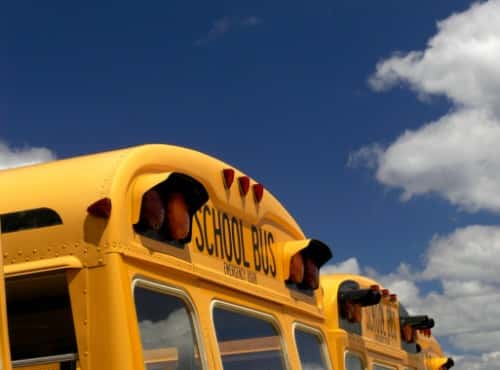 When it comes to transportation costs, school districts throughout New York State are constantly searching for ways to improve efficiency.
When it comes to transportation costs, school districts throughout New York State are constantly searching for ways to improve efficiency.
At Washingtonville Central School District, located in Washingtonville, N.Y., we found that changing our bus fuel has improved finances and positioned us as a leader in environmental initiatives and a model for the community.
We operate an 89-bus fleet to transport more than 5,000 students to 28 Orange County area schools – public, private and parochial. Currently, 18 buses are fueled by propane autogas. We recently ordered nine more Blue Bird Propane-Powered Vision Type C buses, which would make 30% of our fleet powered by an alternative fuel.
When making our initial purchase of eight autogas buses, each bus cost about 9% more than the comparable diesel model. But we were able to recoup that incremental cost within one year, and our savings continue.
First, our fuel costs have gone down. On average, we spend 40% to 45% less per gallon for autogas than diesel. Currently, we pay $1.70 per gallon for autogas and $3.18 for diesel, equating to an annual fuel savings of $21,000 per year, including a federal tax credit.
Also, our routine maintenance costs have dropped 30%. Our buses travel an average of 18,000 miles per school year. We complete routine maintenance, such as oil and filter changes, every 7,500 miles on our autogas buses, compared to every 5,500 miles for our diesel buses. Each service costs, on average, five cents per mile for autogas and 13 cents per mile for diesel.
On the other hand, there were start-up costs to build an on-site autogas fueling station at the school bus depot. But they were minimal. We poured a concrete base during the summer, and our local propane distributor provided a 1,000-gallon tank and fuel dispenser at no charge. The company trained and certified our head mechanic in refueling, enabling him to train other drivers.
Our drivers have given us positive feedback. This past winter, there were 40 mornings when it was so cold that our team had to start up the diesel buses before drivers arrived. But not the autogas buses. They started up immediately when the drivers arrived, and drivers said the heat came on fast.
Our drivers have also noticed a noise reduction. At idle, autogas buses are 11 decibels quieter than diesel. And on the road, drivers say they hear the kids more clearly. That helps improve the driver's level of control and the bus' security.
Before choosing to fuel with autogas, we visited three school districts using alternative fuels. We recommend other districts do similar due diligence.
A desire to reduce our district's carbon footprint was another factor in our decision to buy autogas buses. Our autogas buses have fuel systems that reduce carbon monoxide, nitrogen oxide and total hydrocarbon emissions, as well as virtually eliminate particulate matter, when compared to conventionally fueled school buses. We estimate that our current autogas fleet will emit 2.2 million fewer pounds of carbon dioxide into the atmosphere over the lifetime of the 18 buses.
Our district superintendent, Roberta Greene, has made dozens of presentations to citizens to inform them of how our bus fleet fits into district efforts to improve environmental stewardship. The district has an aggressive recycling program and solar paneling for the high school.
With the continued support of the school board and the community, we hope over time to replace our entire fleet with propane autogas buses. As we gain experience, we are happy to share information with other districts.
Paul Nienstadt is the executive director of operations for the Washingtonville Central School District. He has been in the position for more than 10 years and is responsible for transportation, facilities operations, buildings and grounds maintenance, safety and security. This is an adapted version of an article that originally appeared in On Board, a newspaper published by the New York State School Boards Association.






